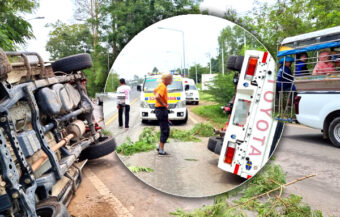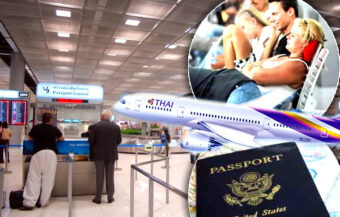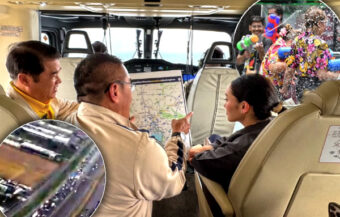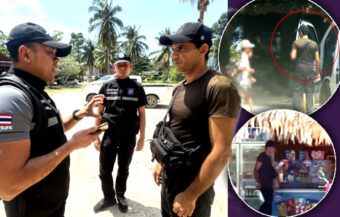Thailand’s new digital entry system, set to replace TM6 forms from May 2025, is raising concerns among travellers. Testing reveals glitches and fears about accessibility, while a tourist levy linked to the system could impact foreign tourism targets.
Thailand is testing a new digital traveller entry system, which is being operated by the Immigration Bureau of the Royal Thai Police. At length, in January, the Ministry of Tourism and Sports announced that such a system would come into force on May 1st, 2025. Indeed, it would replace the old TM6 cards, which were abolished the previous year on April 30th, 2024. However, there are fears that the new system being tested will cause problems. On the one hand, the new requirement for travellers is another imposition on them, while on the other, it is seen as improving security and paving the way for a foreign tourism levy. In turn, this will help provide automatic insurance coverage to visitors to the kingdom.
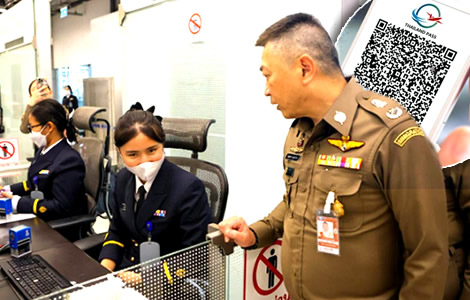
There is mounting concern about would-be travellers to Thailand over the coming months over the new Electronic Travel Authorisation system set to be mandatory for all incoming passengers from May 1st, 2025.
Certainly, last year the cabinet ordered the Immigration Bureau to do away with the old pale blue and white TM6 form.
That was on April 30, 2024. At length, this came after it was discovered that forms collected at Immigration Bureau checkpoints were stored in massive warehouses.
Government audit led to the decision to abolish the TM6 form and streamline entry procedures for visitors
Indeed, this move came years after a government audit set up to cut red tape recommended its abolition. Presently, travellers entering Thailand can walk straight through except for receiving an entry stamp.
In the meantime, hotel operators file a TM30 with the Immigration Bureau for new guests. In short, this takes place as they register to stay at their hotel.
Certainly, the new emphasis on the Electronic Travel Authorisation (ETA) system is all about security. Thailand has certainly lost ground in China over the country’s perceived lack of security control. Particularly, the debate over the kidnapping of Chinese actor Wang Xang in January. In turn, that saw a high-level Chinese security delegation visit the kingdom. After that, the Chinese authorities at the highest level ordered a crackdown.
This eventually led to the crackdown in February 2025. At length, electricity was turned off to five areas of Myanmar. Later, thousands of scam centre slaves were released and transported home, in particular to China.
In brief, the story has shaken confidence in Thailand.
The Ministry of Tourism and Sports is currently testing the Electronic Travel Authorisation (ETA) in May 2025
At length, the new Electronic Travel Authorisation (ETA) system is presently being tested by the Ministry of Tourism and Sports. Indeed, they are working in tandem with the Ministry of Foreign Affairs.
In summary, the permanent secretary of the Ministry of Tourism and Sports, Mr. Mongkon Wimonrat, earlier acknowledged the potential for problems.
On one hand, he clarified that the new system will be mandatory for all incoming travellers. However, on the other hand, he made it clear that the system would need tweaking and testing.
Certainly, that is what we are witnessing right now. The Electronic Travel Authorisation (ETA) system means all travellers without a Thai passport must be cleared to travel to Thailand.
In particular, and this worries many regular foreign tourists to the kingdom, we were told in January the government has resurrected technology from the COVID-19 era.
Undoubtedly, that period was a disaster for Thailand’s foreign tourism industry. For instance, insecurity and a lack of confidence in the process itself put off and deterred visitors to the kingdom.
Government’s push towards the ETA system raises questions about its effectiveness and its potential impact
Nevertheless, the Thai government is moving forward towards this at this time. In brief, any passenger with a visa requires a barcode confirmed by the system to enter Thailand.
The system online presently is called the Thailand Digital Arrival Card (TDAC) system. At length, it is causing panic as users find it difficult to navigate. At the same time, they report glitches in trying to use it. Nevertheless, on Saturday, our reporters had little difficulty with it. Indeed, it appeared stable and straightforward.
In particular, older travellers are asking what the option is for tourists or travellers who do not have a smartphone. Indeed, for those without access to the internet at all.
Furthermore, users have reported trouble accessing a video tutorial explaining the system.
“Am I surprised? Nope. What happens if you don’t have a smartphone?” exclaimed one frustrated user this week.
Users report difficulties with the TDAC system, raising concerns over accessibility and usability
However, the system online presently appears easy enough to use. Basically, users are asked to file their passport details.
After that, they are asked for their name, date of birth, occupation, country and city of residence and phone number. Indeed, these are all mandatory. In addition, they may optionally provide visa references.
Step two asks them to provide details on their trip or accommodation in Thailand. Finally, step three involves a health declaration for the travellers.
Afterwards, the system issues a barcode clearance which is, in effect, the green card for entering Thailand. Of course, this is in addition to a valid passport and other visa requirements.
Significantly, this process must be submitted within 72 hours prior to the scheduled arrival date. After that, the QR code is issued. Certainly, this system is also linked to the Thailand Pass application used during the COVID-19 pandemic.
The new regime is indeed similar to systems in use in other countries, particularly the United Kingdom. Afterwards, it is seen as a possible first step to eventually collecting a tourist charge or tax levy.
At length, this has consistently been postponed by the government.
Tourist levy linked to the new ETA system could provide automatic insurance cover for foreign visitors
Significantly, this tourist levy is planned to come with automatic insurance coverage of up to ฿500,000. Therefore, it has been broadly supported by the Thai foreign tourism industry. This comes despite fears it may act as an impediment to the country reaching its foreign tourist target this year.
Certainly, this Electronic Travel Authorisation (ETA) system, now known as the Thailand Digital Arrival Card, would in particular be seen as a success for the government.
Additionally, while the TDAC is not a visa application, some travellers have mistakenly conflated the two. Those entering visa-free, as well as those with visas and work permits, must still complete the process.
Concerns have also emerged over whether the TDAC could evolve into a broader data collection tool or even a precursor to an exit card requirement, although no official confirmation has been given.
Concerns grow over potential future complications and lack of clarity surrounding the TDAC system
As Thailand pushes towards digitalisation in its immigration systems, clarity is still lacking. It comes as a scandal has blown up over the lack of faith in biometric screening system installed in 2019 at a price of ฿2.1 billion. In short, this is linked to prohibitively expensive licensing fees, according to a parliamentary panel.
Questions remain on how offline travellers will deal with the system. For instance, whether paper backups will still be needed. Indeed, how the collected information will be processed at entry points.
New online TM 6 forms to be filled up by all travellers to Thailand starting from May 1st to bolster security
New Electronic Travel Authorisation (ETA) system coming soon with a ฿300 tourist levy and insurance
Thailand finds itself downgraded by the World Economic Forum’s Tourism index in its latest wide-ranging report
With the deadline fast approaching, it is unclear whether the authorities will be fully prepared. Meanwhile, there is always the possibility that last-minute changes will add to the confusion. Finally, whether the new system will be postponed yet again.
Notably, it is coming into operation at a time when there are fears about foreign tourism arrival numbers. However, this is normal for the off-peak season. At the same time, Thailand has never been so dependent economically on foreign tourism income.
Join the Thai News forum, follow Thai Examiner on Facebook here
Receive all our stories as they come out on Telegram here
Follow Thai Examiner here
Further reading:
Tourism Levy will take at least six months to implement even after a cabinet decision to approve it
New Electronic Travel Authorisation (ETA) system coming soon with a ฿300 tourist levy and insurance



